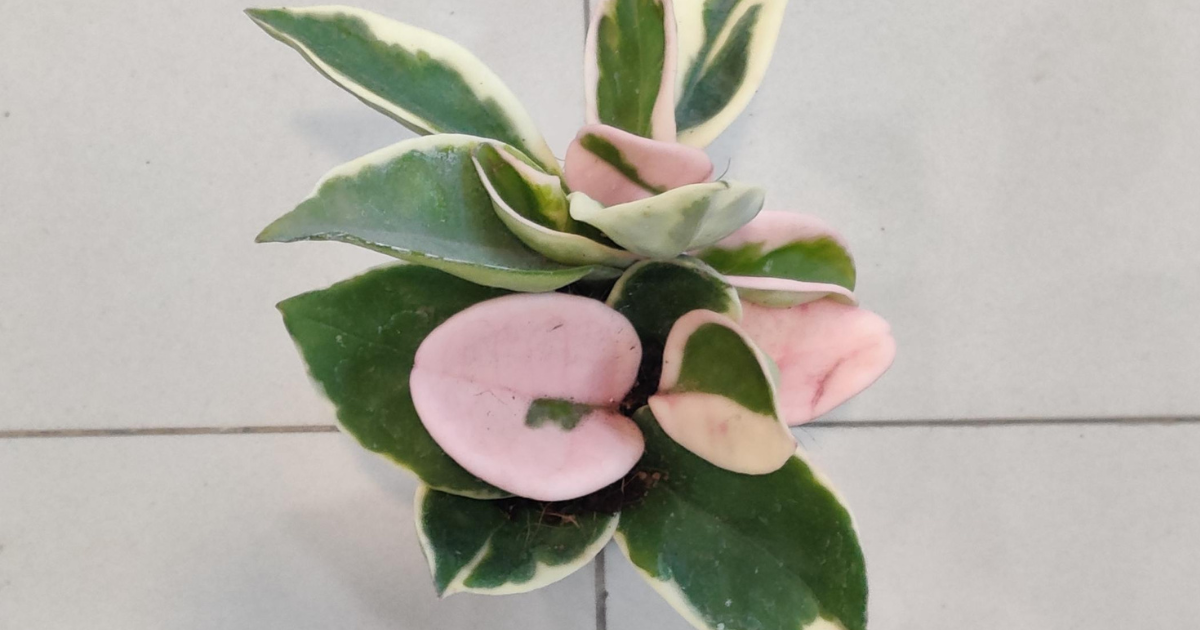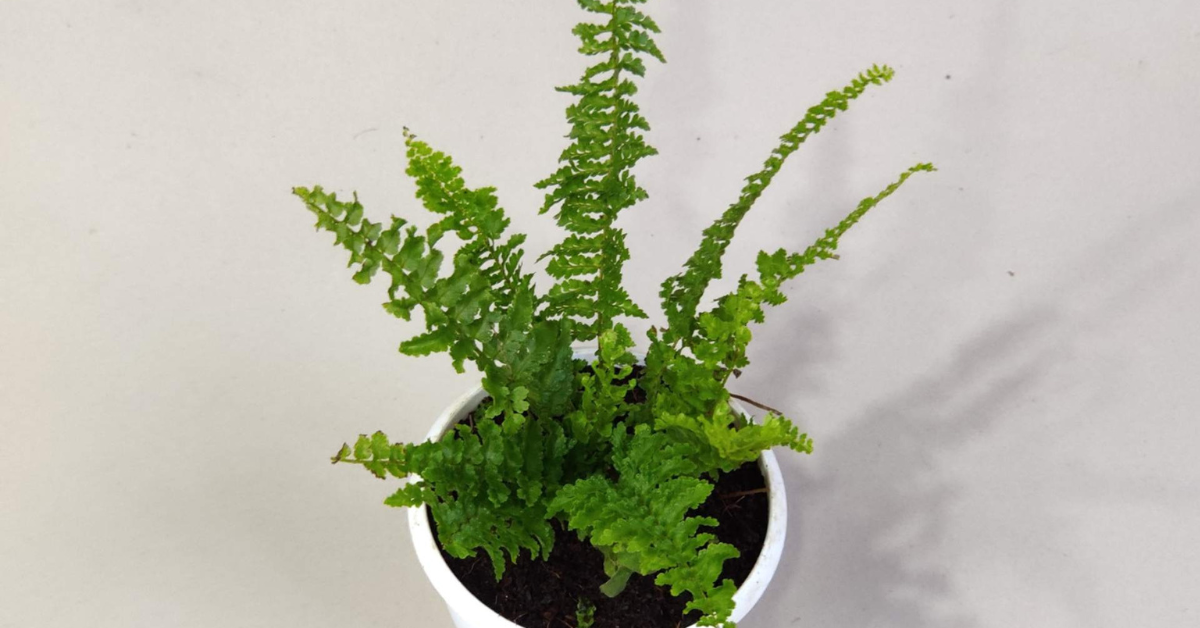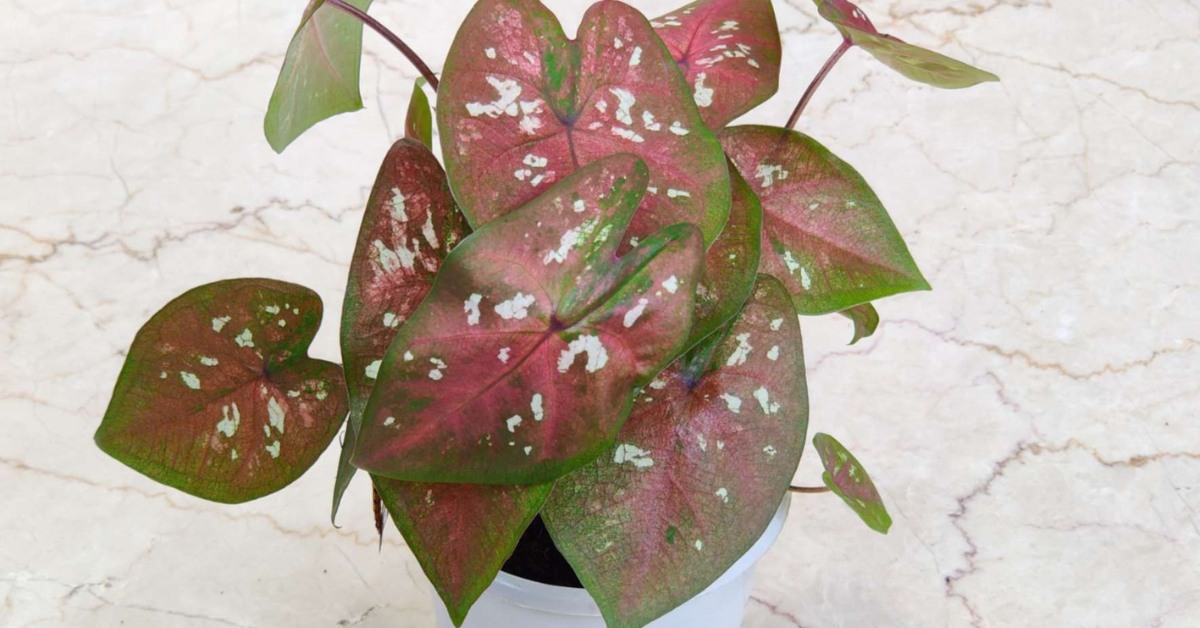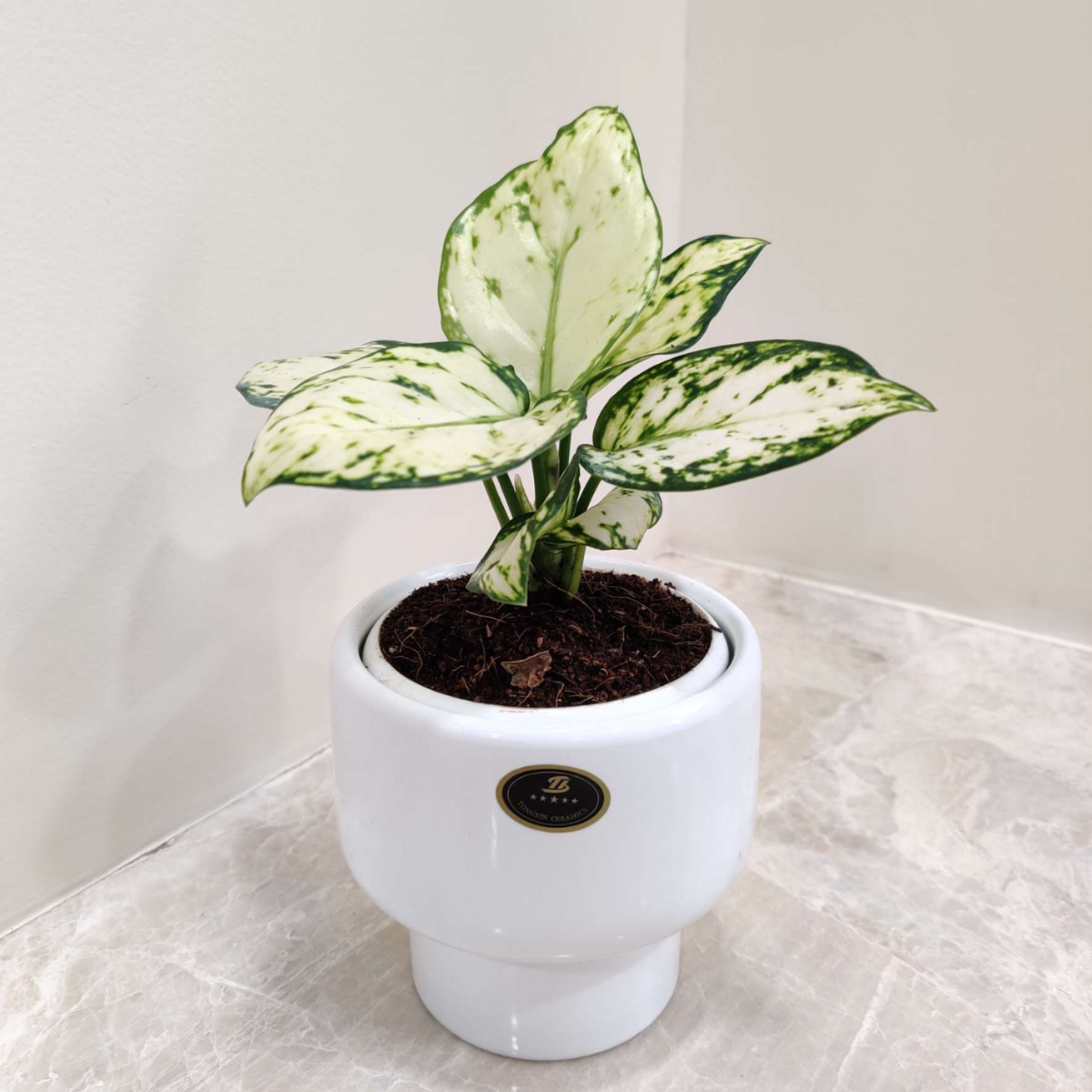If you’ve ever fallen under the spell of velvety leaves shimmering with deep green and crimson hues, chances are you’ve encountered the Philodendron verrucosum. Often referred to as the “Velvet Queen” of the plant world, this tropical beauty commands admiration — not just for her looks, but for the challenge she presents. Growing this plant successfully is a badge of honor among aroid collectors.
This isn’t a low-maintenance windowsill resident. Philodendron verrucosum is a diva in the best sense — demanding very specific conditions, rewarding dedication with spectacular foliage that can stop any plant lover in their tracks. In this comprehensive guide, we’ll explore everything from its rainforest roots to expert-level care strategies, while weaving in practical tips for keeping your own Velvet Queen thriving indoors.
1. Origins & Natural Habitat: Where the Velvet Queen Rules
Understanding a plant’s native environment is the key to unlocking its indoor care needs. Philodendron verrucosum belongs to the Araceae family and is native to a broad swath of Central and South America, including Costa Rica, Panama, Colombia, Ecuador, and Peru.
It’s most commonly found in premontane mountainous rainforests at elevations above 500 meters (1,640 feet). This environment is rich in biodiversity, with constant humidity, filtered light, and a dense canopy overhead.
What makes this plant even more fascinating is its hemi-epiphytic growth habit. It can begin life as a seed on the forest floor, climbing a nearby tree, or start its journey high up on a branch, sending roots down to the soil. This dual growth strategy is why it craves climbing support indoors — it’s hardwired for vertical life.
2. Distinctive Features: Why Collectors Can’t Resist
The allure of Philodendron verrucosum lies in its dramatic foliage and unique textures.
- Velvety Heart-Shaped Leaves – Each leaf is soft to the touch, thanks to tiny hairs (pubescence) that give it a luxurious, almost fabric-like finish.
- Lime Green Veining – The vibrant contrast of bright veins against a deep green blade makes every leaf look like a work of art.
- Ruby Red Undersides – The abaxial (underside) of young leaves emerges in shades of crimson and maroon before mellowing with age.
- Hairy Petioles – The leaf stalks are covered in fine bristles, adding another textural detail that collectors adore.
- Vining Growth – As it climbs, the plant produces longer petioles and potentially larger leaves, given the right support and humidity.
- Occasional Blooms – While rare indoors, the plant can produce a white-and-pink spathe and spadix flower under ideal conditions.
3. Forms & Hybrids: Variations of Velvet Beauty
Thanks to its wide native range, P. verrucosum appears in several natural forms, each with subtle variations in leaf shape, size, and coloration:
- ‘Rojo’ – Deep red leaf undersides with a richer tone than most.
- ‘Verde’ – Extremely dark green leaves, subtle veining, and muted red backs; thrives only in very high humidity.
- ‘El Valle’ – A dwarf variety with coppery young leaves, ideal for terrariums.
- ‘Amazon Sunset’ – Highly sought after for its vibrant color transitions.
Hybridization has also brought us stunning crosses, including:
- Philodendron ‘Splendid’ (verrucosum × melanochrysum)
- Philodendron ‘Majestic’ (verrucosum × sodiroi)
- Philodendron ‘Titanium’ (verrucosum × serpens)
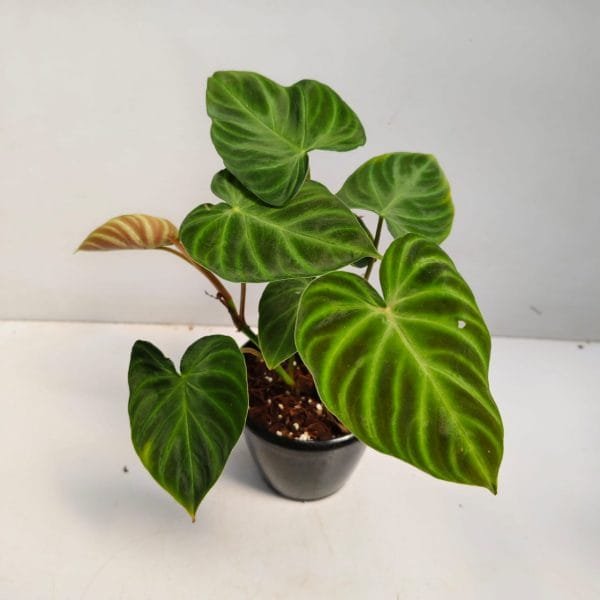
4. The Philodendron verrucosum Care Blueprint
The key to success with this plant is replicating rainforest conditions indoors — light, humidity, temperature, and moisture must all align.
Light: Bright but Indirect
- Originating from the rainforest understory, P. verrucosum thrives in bright, indirect light.
- Direct sun will scorch the delicate leaves.
- East-facing windows or filtered south-facing light work best; grow lights can help in low-light homes.
Temperature: Warm but Not Stifling
- Prefers 20°C to 25°C (68°F to 77°F).
- Can handle up to 28°C (82°F) if humidity is kept high.
- Avoid cold drafts — anything below 15°C (59°F) can cause damage.
Humidity: The Non-Negotiable Factor
- Needs above 70% humidity for peak growth.
- Will survive at 50%, but leaf quality declines.
- Use humidifiers, pebble trays, or group plants together to raise levels.
Soil: Aerated and Moisture-Retentive
- Use a chunky aroid mix with coco coir, orchid bark, and perlite.
- Roots need oxygen — compact, soggy soil will lead to rot.
Watering: Consistent but Controlled
- Water when the top 2–3 cm (1 inch) of soil feels dry.
- Avoid complete drying out, but never let it sit in water.
- Adjust frequency based on season and environment.
Feeding: Gentle and Regular
- Apply a diluted aroid fertilizer every 2–4 weeks during active growth (spring–summer).
- Skip or reduce in winter when growth slows.
5. Climbing Support: Moss Poles & Beyond
Because P. verrucosum is a natural climber, vertical support is essential. Moss poles are ideal because they:
- Retain moisture for aerial roots
- Encourage larger, more mature leaves
- Mimic the texture of tree bark in the wild
Pro Tip: Use the “chop and extend” method when the plant grows too tall. Cut the vine, re-root the top, and attach it back to the pole to keep a lush appearance.
6. Maintenance & Troubleshooting
Even with perfect care, you’ll encounter challenges. Here’s how to handle the most common ones:
| Problem | Likely Cause | Solution |
|---|---|---|
| Yellowing leaves | Overwatering, poor drainage | Let soil dry slightly; repot in airy mix |
| Brown edges | Low humidity or underwatering | Increase humidity; adjust watering |
| Leggy stems | Insufficient light | Move closer to bright indirect light |
| Spider mites | Dry air, lack of leaf cleaning | Increase humidity; rinse leaves weekly |
7. Pest Prevention: The Spider Mite Battle
When it comes to Philodendron verrucosum care, one pest tends to outwit even experienced plant keepers — spider mites. These tiny sap-sucking arachnids thrive in warm, dry indoor environments, making your Velvet Leaf Philodendron an irresistible target if conditions aren’t right.
Why spider mites love Philodendron verrucosum
- The plant’s velvety leaves provide sheltered crevices for mites to hide and lay eggs.
- Dry air weakens the plant’s defenses, making infestations more likely.
- Infestations often go unnoticed until fine webbing and stippled leaves appear.
How to prevent spider mites naturally:
- Maintain high humidity – Keep levels above 70%, as spider mites dislike moist air. A consistent humidity level also benefits leaf health and color vibrancy.
- Inspect leaves weekly – Focus on the undersides of leaves and along hairy petioles, as these are common hiding spots.
- Clean the foliage regularly – Gently wipe leaves with a damp microfiber cloth or spray them with lukewarm water to dislodge pests before they multiply.
- Isolate new plants – Quarantine new additions for at least two weeks to prevent introducing pests to your collection.
Pro Tip: If you detect early signs of mites (speckled leaves or fine webbing), act fast. Treat with neem oil or an insecticidal soap spray, repeating every 5–7 days until no signs remain.
8. Propagation: Sharing the Velvet Love
One of the joys of keeping a healthy Philodendron verrucosum is being able to propagate it and share its beauty with other plant lovers. The most reliable propagation method is stem cuttings, which works well due to the plant’s vining growth habit.
Step-by-step guide to propagate Philodendron verrucosum:
- Select the right cutting – Choose a healthy vine section with at least one visible node (the point where a leaf meets the stem) and a mature, healthy leaf.
- Make a clean cut – Use sterilized pruning shears to cut just below the node, ensuring minimal damage to the mother plant.
- Choose your rooting medium – Sphagnum moss is highly recommended as it retains moisture while allowing airflow, reducing the risk of rot. Alternatively, use water or a chunky aroid mix.
- Maintain ideal conditions – Place the cutting in bright, indirect light and keep humidity above 70% to encourage faster rooting. A clear propagation box or plastic cover can help maintain moisture.
- Transition to soil – Once roots are 5–7 cm long, transfer the cutting into a well-draining aroid mix. Water lightly for the first week to help it adjust.
Propagation benefits:
- Expands your indoor plant collection at no extra cost.
- Creates fuller plants when multiple cuttings are planted together.
- Allows you to rescue leggy growth through the “chop and extend” method.
Philodendron verrucosum can be a surprisingly fast grower when conditions are right, and its fine root system benefits from fresh, well-draining soil each year. Repotting not only gives the roots more space but also refreshes nutrients for healthier growth. For a step-by-step guide on timing and technique, check out our full article When and How to Repot Your Philodendron for Healthier Indoor Growth.
9. Is the Velvet Queen Right for You?
Philodendron verrucosum is undeniably breathtaking, but it’s not a plant for the faint of heart or those looking for a low-maintenance indoor plant. It has specific care requirements that demand consistency and attention to detail.
Best suited for:
- Experienced plant keepers – Those familiar with moss pole training and advanced aroid care.
- Collectors and rare plant enthusiasts – Especially those seeking statement foliage with velvety textures and vibrant colors.
- Growers with controlled environments – People who can maintain high indoor humidity, bright indirect light, and stable warmth year-round.
Why it’s challenging:
- Requires constant humidity above 70% for optimal growth.
- Highly prone to spider mite infestations without regular cleaning.
- Sensitive to overwatering and poor airflow.
Why it’s worth it:
If you’re prepared to meet its needs, the Velvet Leaf Philodendron will reward you with luxurious heart-shaped leaves, striking lime-green veins, and ruby-toned undersides that few other houseplants can match. Caring for Philodendron verrucosum successfully is a sign you’ve reached an expert level in indoor plant care — and the pride of watching this beauty thrive is unmatched.
Want to master the art of keeping your plants happy?
Final Thoughts
Growing Philodendron verrucosum is a commitment — it demands patience, precision, and a bit of plant-parent indulgence. But those who rise to the challenge are rewarded with living works of art: velvet leaves etched in lime, undersides glowing like a hidden sunset.
If you’re ready for the next step in your plant journey, the Velvet Queen awaits. Just be prepared to treat her like the royalty she is.
FAQs
1: Why are my Philodendron verrucosum leaves turning yellow?
Likely overwatering or poor drainage. Check that your soil mix is airy and water only when the top layer is dry.
2: Can I grow this plant in normal household humidity?
Yes, but expect smaller leaves and slower growth. For best results, aim for at least 70% humidity.
3: Do I need a moss pole?
Absolutely — without it, the plant will grow leggy and leaves will stay small.
4: Why are the red backs of my leaves fading?
This is natural as the leaf matures. New leaves will show richer red tones.
5: How often should I repot?
About once a year, or when roots begin circling the pot.
6: Can I grow it outdoors?
Only in tropical or subtropical climates that mimic its rainforest environment.





